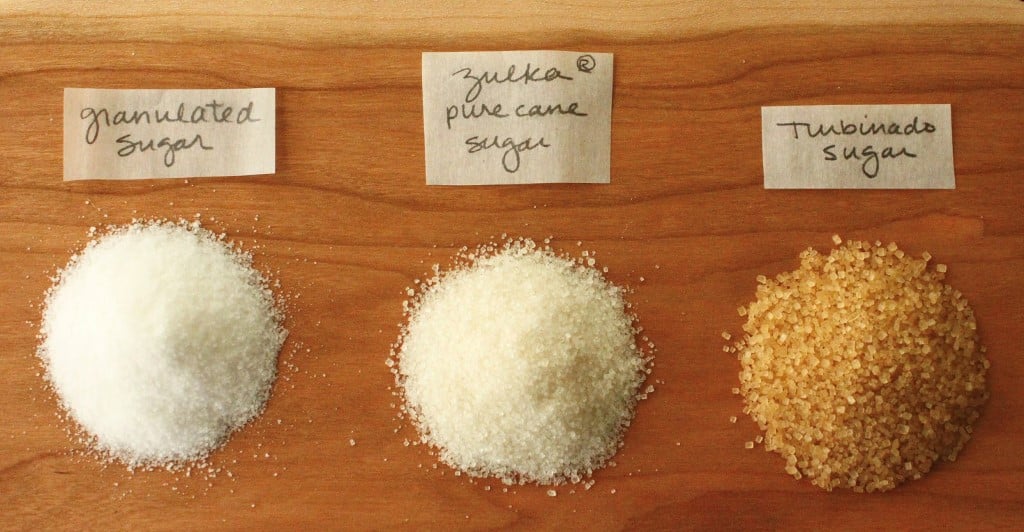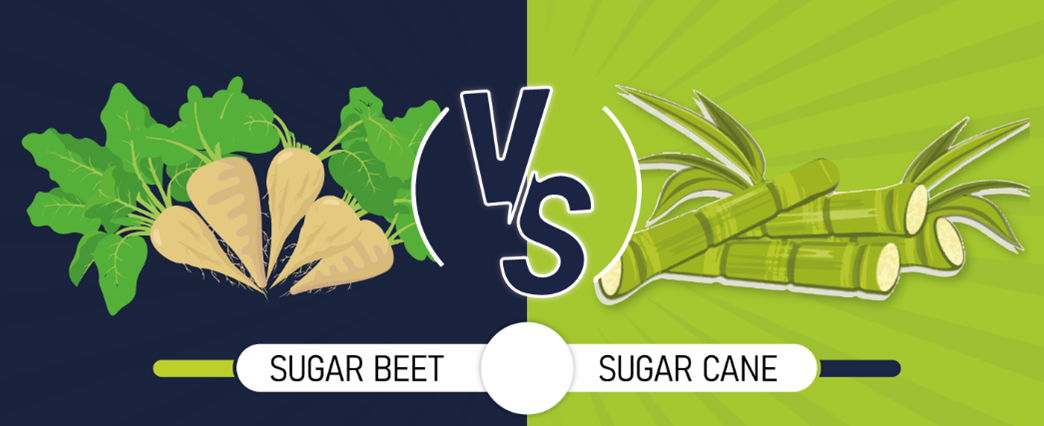Is it possible to intercrop Sugar beet vs sugar cane?
Everything About Sugar Beet Vs Sugar Cane: Which One Uses Greater Conveniences and Utilizes?
The comparison between sugar beet and sugar cane offers a nuanced expedition of their respective advantages and applications. Each plant has unique dietary accounts and expanding problems that influence their use in numerous sectors. As customer preferences shift towards much healthier alternatives, the importance of these two sources of sugar comes to be progressively considerable. Comprehending their differences might disclose insights into which may ultimately serve better in a changing market landscape. What variables will shape this ongoing argument?
Review of Sugar Beet and Sugar Cane
Sugar beet and sugar cane are 2 primary sources of sugar, each with unique features and benefits. Sugar beet, a root crop mainly expanded in temperate climates, is known for its high sucrose content, which can range from 15% to 20%. This crop is usually processed right into granulated sugar, molasses, and various other by-products. Its cultivation enables a shorter growing period and much less dependence on exotic environments.
On the other hand, sugar cane thrives in warmer, tropical regions and is often pertained to for its fibrous stalks, which can yield 10% to 15% sucrose. The processing of sugar cane not just generates sugar yet also leads to products like rum and ethanol, making it flexible. Both plants add considerably to the worldwide sugar market, with their one-of-a-kind expanding problems and handling approaches affecting their agricultural and financial importance. Inevitably, the selection in between sugar beet and sugar cane frequently depends on regional environments and market needs.
Nutritional Profiles: Sugar Beet Vs Sugar Cane
The dietary profiles of sugar beet and sugar cane disclose considerable differences in their nutrient make-ups. Sugar beet has a tendency to provide a greater concentration of nutrients, while sugar cane largely gives energy in the kind of carbohydrates. In addition, the glycemic index of these 2 sources varies, impacting their impacts on blood glucose degrees.
Nutrient Composition Contrast
When contrasting the nutrient composition of sugar beet and sugar cane, distinctive distinctions arise that can affect nutritional selections. Sugar beets are known for their higher fiber material, supplying approximately 2 grams of fiber per 100 grams, while sugar cane has minimal fiber (Sugar beet vs sugar cane). Relating to vitamins, sugar beets use a variety of B vitamins, especially folate, which supports mobile health, whereas sugar cane includes less vitamins in general. Additionally, sugar beets boast a higher mineral web content, including potassium and magnesium, important for numerous bodily functions. Sugar cane primarily provides carbs, specifically sucrose, but lacks the nutrient thickness found in sugar beetroots. These distinctions highlight the dietary benefits of sugar beetroots compared to sugar cane in a well balanced diet regimen

Glycemic Index Distinctions
How do sugar beets and sugar cane differ in their glycemic index, and what effects does this have for individuals checking their blood sugar degrees? Sugar beetroots usually have a lower glycemic index (GI) compared to sugar cane, which implies they cause a slower and more gradual increase in blood sugar levels. This distinction is particularly vital for people with diabetes or those worried regarding blood sugar level monitoring. A lower GI food can help preserve steadier power degrees and lower the risk of insulin spikes. While both sources are primarily made up of sucrose, the differing fiber and nutrient material in sugar beetroots may add to their lower GI, making them a possibly far better option for health-conscious customers.
Growing Problems and Geographic Circulation
Both sugar beet and sugar cane offer as crucial sources of sugar, their growing problems and geographical distribution vary greatly. Sugar cane thrives in exotic and subtropical climates, needing cozy temperatures, plentiful sunshine, and significant rainfall. It is mostly grown in countries such as Brazil, India, and China, where these ecological factors are perfect. Sugar beet vs sugar cane. On the other hand, sugar beet prefers warm climates, thriving in cooler regions with well-drained dirt. Significant manufacturers of sugar beet consist of the United States, Russia, and several European countries, where the growing period straightens with cooler temperatures
The differences in climate demands bring about varying growing techniques; sugar cane is click over here typically expanded as a perennial crop, while sugar beet is normally grown each year. This geographical distinction not only influences local farming economic situations but likewise forms neighborhood methods connected to sugar production and processing. Comprehending these variables is vital for examining the advantages and applications of each resource.
Ecological Impact of Sugar Beet and Sugar Cane Manufacturing
While both sugar beet and sugar cane contribute greatly to global sugar manufacturing, their environmental impacts differ substantially. Sugar cane growing usually requires large areas of land and water, causing logging and habitat loss in some regions. Additionally, making use of fertilizers and chemicals in sugar cane farming can lead to soil degradation and water contamination. Conversely, sugar beet is usually expanded in cooler environments and needs less water, which might reduce the strain on neighborhood water resources. However, intensive farming methods related to sugar beet can additionally bring about dirt disintegration and nutrient deficiency. The handling of both plants creates waste, however sugar cane has a higher potential for by-products, such as bioenergy, which can reduce some ecological impacts. Eventually, the sustainability of each crop mostly depends on farming practices and regional administration approaches employed throughout the production cycle.

Handling Approaches and Performance
Processing methods for sugar beet and sugar cane vary markedly, impacting general efficiency and yield. Sugar beets undertake a process that includes cleaning, slicing, and removing juice with diffusion or pressing. The juice is then cleansed, focused, and crystallized, causing granulated sugar. This technique is generally effective, with a high sugar removal price.
In contrast, sugar cane handling includes crushing the cane to extract juice, followed by explanation and dissipation. The juice is then steamed to create sugar crystals. While both techniques work, sugar cane handling can be a lot more labor-intensive and taxing due to the bigger scale of operations and the demand for a lot more substantial equipment.
Sugar beet processing often results in a higher sugar content per ton compared to sugar cane, making it an extra efficient option in specific areas. Overall, the selection of handling approach impacts not just the yield but also the financial practicality of sugar manufacturing.
Applications in the Food Market
In the food sector, sugar beet and sugar cane offer distinctive functions in sugar production. Each resource uses one-of-a-kind characteristics that affect their culinary applications, from baked products to drinks. Understanding these differences can aid makers and chefs in picking one of the most appropriate component for their requirements.
Sweetener Production Distinctions
Both sugar beet and sugar cane serve as necessary resources for sugar manufacturing, their applications in the food industry vary considerably. Sugar cane is largely connected with generating raw sugar and molasses, which are widely made use of in beverages, confections, and baked goods. Its juice is additionally fermented to develop rum. Alternatively, sugar beet is primarily processed into refined sugar, which is preferred in the manufacturing of granulated sugar and various see other sugar. The extraction process for sugar beet is extra straightforward, enabling higher returns of white sugar. In addition, sugar beet's versatility enables the production of alternate sweeteners, such as beet syrup. These distinctions highlight the unique duties each resource plays in fulfilling the diverse demands of the food industry.
Culinary Utilizes Contrast
Culinary applications of sugar beet and sugar cane disclose distinctive preferences among cooks and food producers. Sugar cane, usually perceived as the typical sugar, is favored in a variety of items, including syrups, molasses, and beverages like rum. Its natural taste enhances desserts, marinades, and sauces. Conversely, sugar beet, utilized mainly in granulated sugar kind, is frequently integrated right into baked products, sweets, and refined foods. Its advice neutral taste account allows it to mix effortlessly into different recipes. Additionally, sugar beet is obtaining grip in natural and non-GMO markets, interesting health-conscious consumers. Eventually, the choice between sugar beet and sugar cane depends upon specific cooking applications, flavor preferences, and market trends within the food market.
Health And Wellness Considerations and Consumer Preferences
An expanding number of consumers are significantly familiar with the wellness ramifications connected with sugar sources, leading to an eager passion in the benefits of sugar beet versus sugar cane. Both sugar sources have distinct nutritional profiles that might affect customer choices. Sugar beetroots often tend to contain somewhat extra fiber and vital nutrients, which can interest health-conscious individuals. Conversely, sugar cane is typically viewed as an extra all-natural and less processed alternative, possibly attracting those looking for organic or raw products.
Furthermore, the increasing appeal of different sugar has triggered consumers to look at standard sugars much more closely. Understanding of extreme sugar consumption's health dangers, such as obesity and diabetes, has fueled a demand for openness pertaining to the origins and handling approaches of sugar. Eventually, private preferences continue to form the discussion between sugar beet and sugar cane, mirroring a more comprehensive pattern in the direction of healthier consuming behaviors and educated consumerism
Often Asked Inquiries
What Are the Historical Uses Sugar Beet and Sugar Cane?
Historically, sugar beet and sugar cane have worked as main sources of sugar. Sugar cane, cultivated for centuries in exotic regions, offered sweeteners, while sugar beet arised in Europe during the 18th century, enhancing local sugar production.

Exactly How Do Sugar Beet and Cane Affect Citizen Economies?
Sugar beet and sugar cane significantly impact neighborhood economic situations through work creation, agricultural efficiency, and trade. Their farming promotes rural advancement, sustains neighborhood organizations, and generates tax revenue, eventually improving neighborhood sustainability and economic strength.
Are There Any Type Of Social Importance Distinctions In Between Sugar Beet and Cane?
Cultural relevance ranges sugar beet and sugar cane. Sugar cane typically represents tropical heritage and standard practices, while sugar beet is linked with farming technology and industrialization, showing different regional identifications and historic contexts in their production.
What Are the Main Vermin Affecting Sugar Beet and Sugar Cane?
The major bugs influencing sugar beet include aphids and root maggots, while sugar cane faces dangers from borers and planthoppers. Both crops call for careful management to mitigate damage and guarantee healthy returns.
Exactly How Do Environment Adjustments Impact Sugar Beet and Sugar Cane Cultivation?
Environment changes substantially influence sugar beet and sugar cane cultivation by modifying development conditions, shifting parasite populations, and impacting water schedule. These aspects can reduce returns and influence overall agricultural sustainability in influenced regions.